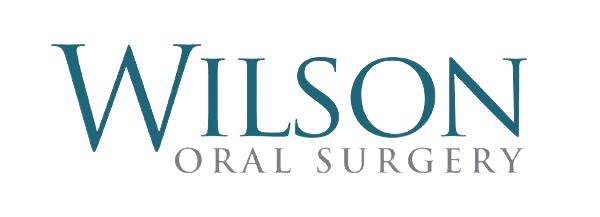Tooth extraction is a dental procedure in which a tooth is removed from its socket in the jawbone. This procedure is performed for various reasons, including severe tooth decay, irreparable damage, infection, overcrowding, or to address issues such as impacted wisdom teeth.
While tooth extraction may seem daunting, it is crucial in preventing further dental problems and maintaining oral health. By removing problematic teeth, tooth extractions alleviate pain, prevent the spread of infection, and pave the way for improved oral function and aesthetics.
Additionally, tooth extractions are vital in orthodontic treatment planning, preparing the mouth for proper alignment and facilitating optimal treatment outcomes. Tooth extraction is a necessary dental procedure that helps preserve oral health, prevent future complications, and promote overall well-being.
Who Can Benefit From Tooth Extractions?
Individuals With Severe Tooth Decay
Severe tooth decay, also known as advanced dental caries, can compromise the tooth's structural integrity and lead to pain, infection, and other complications. In such cases, extracting the decayed tooth can alleviate pain, prevent the spread of infection, and restore oral health.
Patients With Irreparable Tooth Damage
Trauma, fractures, or cracks in teeth can result in irreparable damage that compromises their function and stability. Tooth extractions may be necessary to remove severely damaged teeth that cannot be salvaged through restorative treatments such as fillings or crowns.
Individuals With Advanced Periodontal Disease
Advanced periodontal (gum) disease can cause significant damage to the supporting tissues and structures around the tooth, leading to tooth mobility, bone loss, and eventual tooth loss. Extracting severely affected teeth can halt the progression of periodontal disease and prevent further damage to surrounding tissues.
Patients With Impacted Wisdom Teeth
Wisdom teeth, also known as third molars, commonly become impacted due to lack of space in the jaw or improper eruption angle. Impacted wisdom teeth can cause pain, inflammation, infection, and damage to adjacent teeth. Extracting impacted wisdom teeth can alleviate symptoms and prevent complications.
Individuals With Overcrowded or Misaligned Teeth
Overcrowding or misalignment of teeth can result in bite problems, difficulty cleaning between teeth, and an increased risk of tooth decay or gum disease. Thus, tooth extractions may be recommended for orthodontic treatment to create space for proper alignment and achieve optimal treatment outcomes.
Patients Being Prepared for Orthodontic Treatment
Orthodontic treatment, such as braces or aligners, may require tooth extractions to address severe crowding or misalignment issues. Extracting one or more teeth can create space for proper alignment, improve treatment efficiency, and enhance the stability of orthodontic results.
The Procedure of Tooth Extractions
Preparation and Anesthesia Administration
Before the extraction begins, the dentist or oral surgeon will review the patient's medical history and thoroughly examine the affected tooth and surrounding tissues. Local anesthesia is then administered to numb the area around the tooth, ensuring the patient feels minimal discomfort during the procedure. For more complex extractions or anxious patients, appropriate sedation options may also be administered to induce relaxation and reduce anxiety.
Tooth Removal
Once the area is numb and the patient is comfortable, the dentist or oral surgeon begins the extraction process. For a simple extraction, the tooth is loosened from its socket using specialized instruments, such as elevators and forceps. The dentist gently rocks the tooth back and forth until it is freed from the surrounding bone and ligaments. In cases where the tooth is impacted or requires surgical intervention, an incision may be made in the gum tissue to access the tooth or remove obstructing bone. Depending on the tooth's condition, sectioning the tooth into smaller pieces may be necessary to facilitate removal.
Cleaning and Closure
After the tooth has been successfully removed, the extraction site is thoroughly cleaned to remove debris or bacteria. Sometimes, the dentist must smooth the surrounding bone to ensure a proper healing environment. If the extraction was surgical or involved multiple teeth, the dentist may stitch the gum tissue together to promote healing and reduce the risk of complications. A gauze pad is then placed over the extraction site to control bleeding and facilitate clot formation.
Postextraction Care and Follow-up
Once the extraction procedure is complete, the patient receives instructions on postextraction care to promote healing and minimize discomfort. These instructions may include avoiding certain foods or activities, taking prescribed medications as directed, and practicing good oral hygiene. Patients are typically advised to go to their dentist or oral surgeon for a postextraction evaluation to ensure proper healing and address any concerns or complications that may arise. Call us to learn more.
The Benefits of Tooth Extractions
- Alleviates pain and discomfort associated with severely decayed, infected, or damaged teeth.
- It prevents the spread of infection to surrounding teeth and gums, reducing the risk of abscesses, gum disease, or systemic infections.
- Resolves dental issues such as overcrowding or misalignment, preventing complications like malocclusion, tooth decay, or gum disease.
- Facilitates orthodontic treatment by creating space for proper alignment and achieving optimal treatment outcomes.
- Improves oral function and aesthetics by allowing for the placement of prosthetic restorations like dental implants, bridges, or dentures.
- Enhances overall well-being by alleviating pain, restoring oral function, and promoting confidence and self-esteem.
Tooth extractions are not merely procedures for removing teeth but interventions that can provide many benefits for oral health, function, and overall well-being. To learn more, visit Wilson Oral Surgery at 2151 S College Dr Ste 104, Santa Maria, CA 93455 or 207 Station Way, Arroyo Grande, CA 93420. You an also call our Santa Maria dental office at (805) 925-1440 or Arroyo Grande dental office at (805) 574-1200 to schedule an appointment with us.
